In their comments on my PhotoHunter contribution this week on flags, several people asked me what flag Canada had before we had the current flag, the red maple leaf in a white background.
Up until 1965, we had no flag that was truly “Canadian”.
Most of our flags were either the flag of the country to which Canada belonged or derivative of them.
To understand the history of the Canadian flag is to understand the history of Canada as a nation. Rather a large project for this little blog.
Canada as a nation did not exist until 1867. Prior to that, it was claimed by France, initially. Then Britain made claims to portions of what would later become Canada as part of their broader claim of American colonies. While the American colonies were settled early on by the Dutch and the British, Canada was merely seen as an exploitable resource to the French and the British (and, on the West coast, by the Russians). It wasn’t until the 17th century that France brought the first settlers.
The first flag to appear on what would later become Canada was carried by John Cabot during his exploration for the British Crown.
That flag was known as St. George’s Cross:
Jacques Cartier planted a cross with a flag bearing the French royal coat of arms and the Fleurs-de-lis. After that, the French colonies of New France flew whatever the latest evolution of French military flag was current, one commonly used one was this:
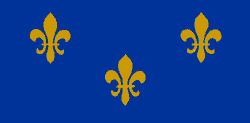
Fleurs-de-lis
The British colonies, meanwhile flew the British flag which eventually replaced the fleurs-de-lis when France ceded its colonies to Britain as part of its settlement in the Treaty of Utrecht (any historians may be tearing their hair out over my foreshortened version of Canadian history… sorry… trying to summarise not write a thesis!).
First flown in 1610, the Royal Union flag was used at all British establishments on the North American continent from Newfoundland to the Gulf of Mexico. This flag is often referred to as the flag of Canada’s United Empire Loyalists. From the early 1760’s it was the flag that flew over British North America, which included what would later become Canada. Post-revolutionary War, Canada consisted of “Upper Canada” and “Lower Canada”. Upper Canada the mainly English-speaking regions, upstream on the St. Lawrence and into Lake Ontario, Huron and Erie, and Lower Canada was the mainly French-speaking regions of the colonies….. downstream on the St. Lawrence, along the Gaspe, and into the New Brunswick.
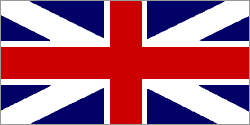
Royal Union
Following the Act of Union between Great Britain and Ireland in 1801, the diagonal Cross of St. Patrick was incorporated with England’s St. George’s Cross and Scotland’s Cross of St. Andrew. This gave the Royal Union its present-day configuration. This flag was used across British North America and in Canada even after Confederation in 1867.
The first “Canadian Flag” to appear was not intended as “Canada’s Flag” but became the flag flown, usually below the Union Jack. It was the flag of the “Canadian Red Ensign” the flag of the British Merchant Marine, with an added crest on the right hand side.

Red Ensign 1868–1921

Red Ensign 1921–1957

Red Ensign 1957-1965
From 1868-1921, the flag included symbols for each of the provinces which were then part of Confederation, as each came into Confederation. Eventually the shield depicted just the founding peoples of Canada (ignoring, of course Native Peoples…) England, Scotland, Ireland, and France over three maple leaves.
Eventually, though, many Canadians were wanting a distinctly “Canadian” flag, something that did not owe its design to the flag of another nation. There had been movements over the years to create a flag but met with great resistance. In the early 1960s, with the approach of the Canadian Centennial in 1967, there was renewed interest in a new Canadian flag. When, in 1963, the new minority Liberal government under Lester B. Pearson came to power, Pearson pushed for a Parliamentary debate over the subject. Opponents were many and vocal, including the former Prime Minister, John Diefenbaker.
Pearson had his own design in mind, three joined maple leaves on a white background, with blue side-bars representing the Atlantic and Pacific Ocean. It met with stiff opposition in Parliament and was dubbed “The Pearson Pennant” by detractors. Eventually, a committee of 15 multi-party members was formed to come up with a design suitable and appropriate was formed. Canadians were invited to send in their ideas and public excitement and debate grew.
After reviewing many designs, the Committee finally settled on a design by George F.G. Stanley, a professor of history in New Brunswick. The committee approved the design, October 29, 1964, and later passed by a majority vote in the House of Commons on December 15, 1964. The Senate added its approval two days later.
It was proclaimed by Queen Elizabeth in January, 1964, and in February, it was inaugurated.
Canada had a new flag!

The Canadian Flag...
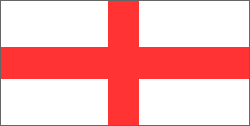
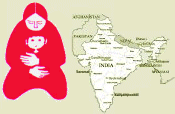

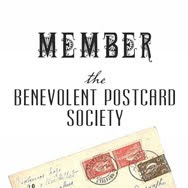


John, royalist & traditionalist said,
October 19, 2010 at 4:50 pm
The Canadian Red Ensign 1957-65 with a spray of 3 red maple leaves (representing autumn) in the coat of arms in the flag’s fly is still my favourite Canadian national flag; the Canadian Red Ensign 1921-57 with a spray of green maple leaves (representing spring) runs a close second. It was a shame that in the mid-1960s the Canadian government saw fit to replace these beautiful flags, resplendent with Union flags in the cantons and the Canadian coat of arms in the fly, with the Maple-leaf flag, or as it was mockingly known by some Canadians in the mid-1960s, Pearson’s Pennant. The Maple-leaf flag may be a simpler and less formal design than the Canadian Red Ensigns, but it has not the same impact and dignified presence of the Canadian Red Ensigns.
zeusiswatching said,
June 29, 2009 at 8:36 pm
Much of my family came to the Americas via “New France.” We have, and we frequently fly, the white version (le drapeau blanc) of the fleur de lys together with the U.S. flag on Independence Day and a few other occasions. There is a fellow who lives not far from us who flies the blue and gold flag you show above.
mudhooks said,
June 29, 2009 at 9:25 pm
The Provincial flag of Quebec is 4 white fleurs-de-lis with a white cross on a blue background…
http://en.wikipedia.org/wiki/Flag_of_Quebec
Your friend may well have come from the Acadians who were transported from Quebec to Louisiana… or whose family migrated south from Quebec.
zeusiswatching said,
June 30, 2009 at 5:50 am
Perhaps so. There is another household too in our city that flies the fleurdelise here in town (and le tricolore ) at other times.
I’ve ancestors from Quebec and others directly, and from a somewhat later date, from France itself. Are there good sites you recommend for learning more about Quebec during the early settlement period of Europeans?
mudhooks said,
June 30, 2009 at 6:20 am
Google query: “New France” history
You can also try Acadians or Acadia and history
Here are a few sites:
http://www.thecanadianencyclopedia.com/index.cfm?PgNm=TCE&Params=a1ARTA0005701
http://www.thecanadianencyclopedia.com/index.cfm?PgNm=TCE&Params=A1ARTA0011510
http://www.linksnorth.com/canada-history/discovery.html
http://www.telusplanet.net/public/dgarneau/french.htm
http://canadian-settlement.suite101.com/article.cfm/the_history_of_new_france
sledpress said,
June 29, 2009 at 6:56 am
And when I think of Spike Milligan describing the way people would ask of him during WWII when he played with a canteen band, “Can you play ‘The Maple Leaf Forever?” and he would answer “No, after about an hour we get tired…”
I had no idea it was adopted so late.
mudhooks said,
June 29, 2009 at 7:04 am
Lol…
If you’ve seen the film “The Untouchables” you’d have thought it had been our flag for a lot longer… In a scene in the film, there were crates in a warehouse stamped with the half flag and “Canada Customs” which would not have appeared on such crates until sometime in the 1980s! I do love bloopers…
sledpress said,
June 30, 2009 at 7:44 am
I saw it so long ago I don’t remember that moment — just Kevin Costner doing his bravura impression of walking constipation.
ImNoDhimmi said,
November 22, 2015 at 3:21 am
“The Maple Leaf Forever” is a patriotic song, written long before our new flag.
mudhooks said,
November 22, 2015 at 4:42 am
I don’t believe anyone said otherwise…
azahar said,
June 28, 2009 at 7:46 am
I’ve always liked this flag. It’s so cheerful and looks like it should be out playing hockey.